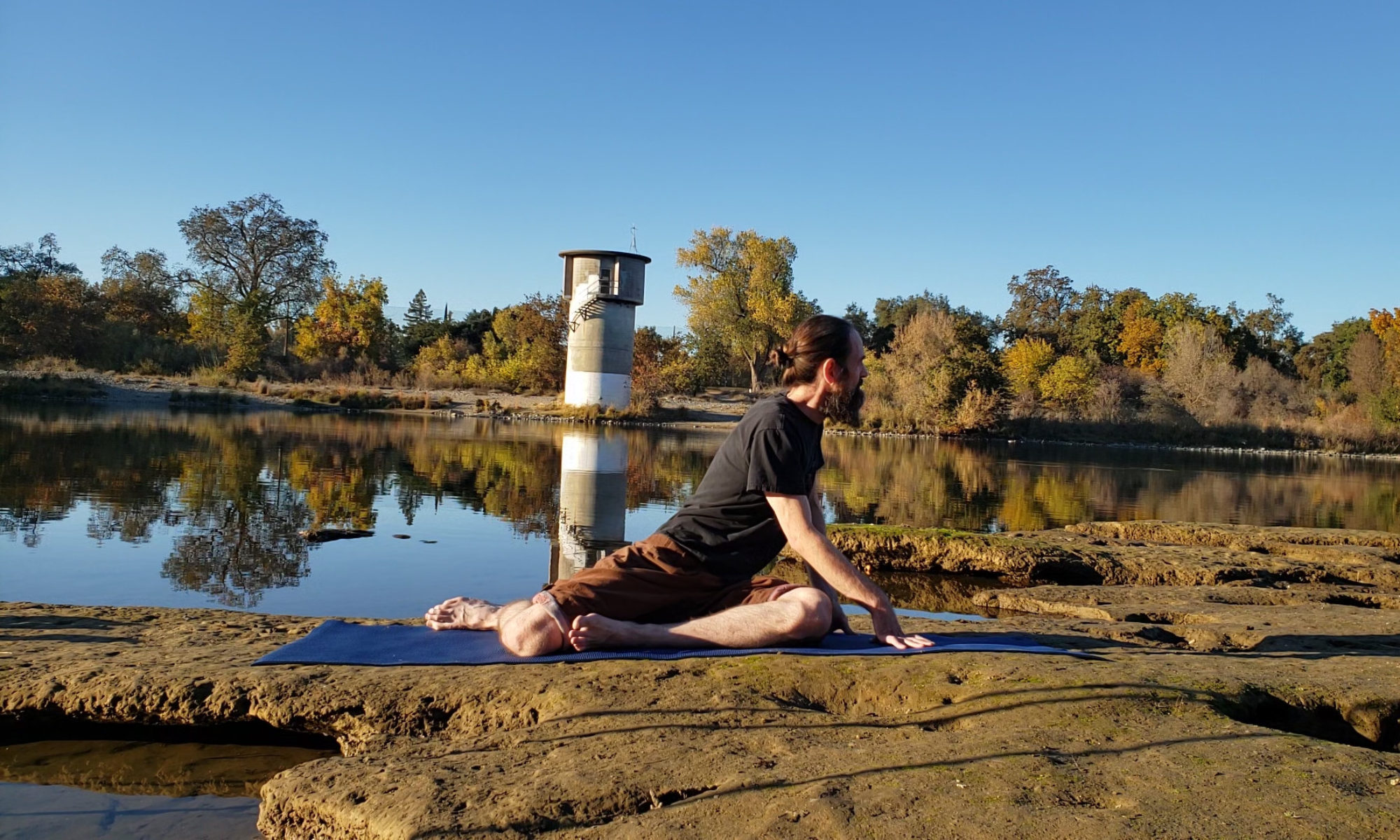A friend of mine likes to refer to Sequential Stretching™ as meditative stretching, but my partner thinks it is not meditation. After some research and reflection, I believe they are both right, in a way. After reading this article, I hope you try some meditative techniques during a stretching session because meditative stretching is one of the most wonderful things I have experienced.

What is Meditation?
Merriam-Webster defines meditate as:
“to engage in mental exercise (such as concentration on one’s breathing or repetition of a mantra) for the purpose of reaching a heightened level of spiritual awareness”
Other definitions indicate the goal of meditation is:
“to achieve a deeper, more devout, or more relaxed state.”
Benefits of meditation
Mayo Clinic lists many emotional benefits of meditation:
- Gaining a new perspective on stressful situations
- Building skills to manage your stress
- Increasing self-awareness
- Focusing on the present
- Reducing negative emotions
- Increasing imagination and creativity
- Increasing patience and tolerance
They also name many illnesses that meditation can help manage:
- Anxiety
- Asthma
- Cancer
- Chronic pain
- Depression
- Heart disease
- High blood pressure
- Irritable bowel syndrome
- Sleep problems
- Tension headaches
Sequential Stretching as Meditation
When I stretch, I am engaging in mental exercise, but my purpose is not to reach a heightened level of spiritual awareness, nor to achieve a deeper or more devout state. However, one of the primary goals of SS (Sequential Stretching) is to achieve a more relaxed state.
A more relaxed body is a more flexible body. I emphasize that stretching should not just be about pulling on tight soft tissues to make them longer. Stretching should be about finding ways to convince your mind to let go of unnecessary tension so that the body can relax. Once your body is sufficiently relaxed, it is a simple matter to move to a body position that is slightly out of your normal range of motion, then relax further to let the hibernating postural muscle fibers gently engage.
Some people may find that SS can be used for purposes like achieving a heightened level of spiritual awareness, a more devout state, or mental clarity. I think those are excellent uses of this technique. It’s not why I do it, but the gentle, mindful, repetitive motion of SS makes it ideal to use for those goals.
If you stick to the Merriam-Webster definition of meditation, then my personal practice of SS doesn’t qualify due to my purpose being different. However, performing an action for a different reason doesn’t really change the outcome of that action. Therefore, I expect that the emotional and illness management benefits of meditation would still apply.
I have personally experienced many of those benefits since I started SS, including lower blood pressure, reduced chronic pain, increased self-awareness, improved mental focus, and increased patience.
How to Meditate with Sequential Stretching
My favorite way to stretch is to go into what I call the cocoon. I go to a quiet, temperate, carpeted room, turn off all the lights, close the door, and shut the curtains tightly to make it as dark as possible before starting a stretching session. I typically do this just after using cannabis, as I do for 80-90% of my stretching time, due to the muscle relaxation and psychedelic effects.
This careful arrangement of my stretching environment is an example of sensory deprivation: the deliberate reduction or removal of stimuli from one or more of the senses. By removing external stimuli, I can focus my mind more fully on the sensations and sounds of stretching. This allows me to stretch more gently because I can sense microreleases at a shallower stretch level, especially if I can hear the soft sounds of tension release.
A quiet, completely dark room can be difficult to achieve, but using earplugs and just closing your eyes can have similar effects. A yoga mat is helpful if there is no carpet available.
Keeping your mind from wandering to random thoughts is also key to meditating with SS. This is often the hardest part for me to achieve. Tension visualization is one of the best ways to focus more of your brain cells on stretching. This involves mentally picturing a representation of the varying levels of tensions throughout the range of motion felt while moving through the sequence. Creating this mental picture and updating it each time you move slightly takes a lot of mental focus and keeps your mind too busy to wander. Another way to keep focus is to visualize those random thoughts floating happily away in a bubble before turning your attention back to the sensations from your body.
Focusing the Mind on Stretching
The muscles and soft tissues of the human body have billions of sensory nerve cells potentially providing input to the brain at any given moment. There is usually way more sensory information coming into the brain than it can effectively process, so much of that input gets discarded. By reducing the amount of extraneous input, you can make use of more relevant information on tightness, muscle engagement, and release to make more effective stretching decisions.
During a stretch sequence, there are a huge number of possible directions to move, speeds to move at, as well as decisions on when to pause, when to trigger a microexpansion or area expansion, when to pick more effective positioning points, and when and where to send a relaxation signal. There is usually not only one correct decision out of all of these possible directions, but the more relevant input on sensations and sounds you can process, the more likely you are to make choices that will keep the number of tension releases high while keeping overall tension levels low. A high number of tension releases per minute is the main indicator of how quickly you will improve your flexibility. If you keep overall body tension low while stretching, you will also avoid fatigue and soreness that would require more recovery time before stretching more.
Effects of Meditating with Sequential Stretching
Upon emerging from the cocoon after 30-60 minutes of gentle stretching, I feel more calm and focused than most any other time in my life. I also usually feel like I’ve had one of the best stretching sessions ever. It’s a feeling that I treasure greatly and one I hope all of you reading this experience.

